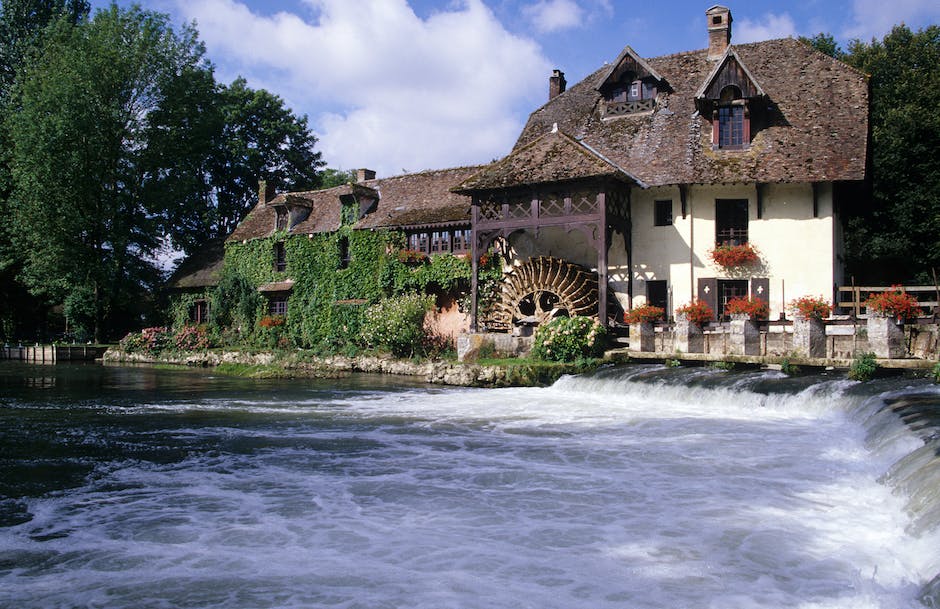Toe flow in a putter is the tendency of the putter head to rotate about an axis perpendicular to the shaft, resulting in the toe of the putter head moving more quickly than the heel. Toe flow can be induced by any number of factors, including the weight of the putter head, the length of the putter shaft, and the way in which the putter is swung.
The toe flow in a putter is the amount of movement in the toe of the putter head during the stroke.
How much toe hang should my putter have?
Putter toe hang is the amount that the leading edge of the putter hangs over the back of the heel. Toe hang is important in determining the stroke path of the putter, as well as the face angle at impact.
Putter manufacturers typically design their putters with a toe hang of 30° to 45° degrees, depending upon the hosel length and the distance the neck is from the heel. Putters that exhibit a large amount of toe hang are heel-shafted.
Heel-shafted putters are typically used by golfers with a straight-back-and-through stroke path. If you have an arcing stroke path, or if you tend to hit the ball on the upswing, a heel-shafted putter is likely not the best option for you.
A toe hang putter is going to help you square the putter face at impact if your stroke has an arc to it. This will benefit you if you tend to push the ball away from you. I’ve noticed that the majority of mid to high handicaps hit the ball fairly straight. Again, if that’s the case, go with a face-balanced putter.
What does more toe hang mean on a putter
Toe hang putters are designed with more weight on the toe side of the head, which causes the putter head to open on the backstroke. As you change direction to make the forward stroke, the putter head continues to lag, causing the putter head to remain open. This can help you achieve a more consistent stroke and better accuracy.
There is a lot of debate amongst golfers about the best way to set up at address. Some say that the driver should always be kept close to the body, while others argue that it should be kept further away. However, the majority of experts agree that the driver should be kept close to the body and the toe up at address. This is because when the hands return close to the body while impacting the ball, there is a centrifugal force of up to 70 pounds just before impact, acting at the center of gravity (cg) of the head. This force can help to keep the ball on the fairway and improve your accuracy.
How do I know what toe to hang on my putter?
There are three main types of putters – face-balanced, toe-balanced, and mallet. Face-balanced putters have the least amount of toe hang, meaning the face is perpendicular to the ground at address. Toe-balanced putters have more toe hang, meaning the toe points down at address. Mallet putters have the most toe hang, meaning the face is pointing up at address. The neck design (slant, plumber’s, etc) and shaft bend directly affect the amount of toe hang in a particular putter.
It is important to find a putter that is the right weight for you. Heavier putters tend to be easier to swing smoothly, while lighter putters tend to be easier to dial in your distances with. Remember this though — overall weight and swing weight are not the same thing. Overall weight is as the name implies — how much a putter weighs on a scale. Swing weight is a measure of how the weight is distributed throughout the putter head.
What type of putter is most forgiving?
Mallet putters are often seen as being more forgiving than their blade counterparts. This is because they typically have a larger sweet spot and are more stable overall. If you’re struggling with your putting accuracy, then a mallet putter may be a good option for you.
Generally, there are a whole bunch of different putters, but at Cool Clubs we put them into three general categories: mallet, traditional and blades. Mallet putters are usually heavier and have a larger head, making them more forgiving. Traditional putters are the most popular type – they’re well-balanced and have a classic look. Blade putters are thinner and offer more precision.
Why are Odyssey putters so good
There is no doubt that Odyssey Putters are some of the best in the business. They are constantly being used by top golfers on the Tour and their products are some of the most popular in the sport. They offer a great selection of putters to choose from, with each one designed to help with a specific aspect of your game. Whether you need help with alignment, or you want a putter that will give you a true roll off the face, Odyssey has a model that will suit your needs. And their classic 2-Ball design is one of the most popular putters on the market, thanks to its stability weighting. If you are looking for a new putter, Odyssey is a great brand to consider.
A golfer’s lie angle is the angle between the shaft of the club and the ground. If the lie angle is too upright, the toe of the club will come up and the putt will tend to miss to the left.
How long should your putter be based on height?
There is no one-size-fits-all when it comes to the length of a putter, as it is directly related to your height. If you are 6 feet or taller, you will need a 35 inch putter, 5’9″ to 6″ suggests a 34 inch putter, while 5’6″ to 5’9″ suggests a 33 inch putter. Customized putters are suggested for those above 6’4″ and shorter than 5’6″.
One of the main differences between the Newport 2 and the original Newport is the 1/4 toe hang. This provides the same toe flow as the Newport, but at address the putters are strikingly different. The Newport 2 has a heel/toe weighted head with a more sharp, mechanical look, while the original Newport has a more traditional look.
Is a blade or mallet putter better for beginners
The best type of putter for a beginner is a golf putter that is extremely forgiving. As I’ve discussed throughout the post, forgiveness is crucial for beginner players. Usually, this means a mallet or high MOI putter as they have a larger sweet spot and tons of forgiveness.
When you turn your head to look at the hole, it will appear left of its actual position. Instead, you should keep your eyes over a spot just inside the ball, a few inches toward your feet. This will help you aim better and avoid pulling the ball to the right.
How do you know if a putter is right for you?
There are two main types of putters – face-balanced and toe-hang. Depending on your stroke (straight or slight arc), you will need one or the other. Face-balanced putters are easier to keep the putter face square throughout the stroke, while toe-hang putters are more suitable for golfers with a slight arc to their stroke.
If you want your putts to roll smoothly, you need to bring your putter back low to the ground and strike the ball with a low-to-low putting stroke. This will help to eliminate any downward hitting motion on the ball that could cause it to pop up and bounce instead of rolling down the line.
Conclusion
There is no definitive answer to this question, as it is a matter of personal preference. Some golfers prefer a toe flow that is more pronounced, while others prefer a more subtle toe flow. Ultimately, it is up to the individual golfer to experiment with different toe flows to see what works best for them.
Toe flow in putters is the bends or curves in the putter head that allow the club to roll the ball more smoothly. It is an important factor to consider when selecting a putter, as it can affect the accuracy and distance of your shots.


